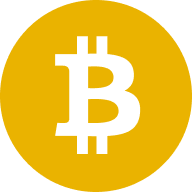BitTorrent (BTT) es una moneda digital que ha ganado popularidad rápidamente en el mercado de criptomonedas. Se originó a partir de la ampliamente utilizada red BitTorrent, conocida por compartir archivos entre iguales.
¿Qué es BTT?
BTT es una criptomoneda introducida por BitTorrent en 2019. Funciona como método de pago dentro de la red BitTorrent, permitiendo a los usuarios comprar velocidades de descarga más rápidas con BTT. También sirve como medio para recompensar a las personas que contribuyen con su capacidad de almacenamiento a la red BitTorrent.
Como token TRC-10, BTT opera en la blockchain de Tron. Tron es una plataforma blockchain diseñada para proporcionar escalabilidad, descentralización y capacidades de alto rendimiento.
El equipo de BitTorrent
Bram Cohen y Ashwin Navin fundaron el protocolo BitTorrent y establecieron BitTorrent, Inc en 2004. Tras la adquisición de BitTorent por Tron, Justin Sun, fundador de Tron, es desde entonces el Director General de BitTorrent. Como joven empresario, Sun saltó rápidamente a la palestra como una de las personalidades más destacadas del sector del blockchain. El equipo de 53 personas que actualmente participa en los aspectos técnicos del proyecto, las operaciones y las actualizaciones está formado por ingenieros y científicos que trabajan principalmente en Estados Unidos.
¿Cómo funciona BitTorrent?
BitTorrent funciona utilizando una red descentralizada de nodos para almacenar e indexar datos. Los datos pueden incluir una amplia gama de información, como entradas de blog, actualizaciones de redes sociales y transacciones financieras. La red BitTorrent utiliza un mecanismo de consenso de Prueba de Participación (PoS) para garantizar la seguridad. Esto significa que los nodos reciben recompensas por asegurar la red haciendo staking de tokens BTT.
Los usuarios pueden utilizar tokens BTT para acelerar sus descargas cuando descargan archivos de la red BitTorrent. La velocidad de las descargas es directamente proporcional al número de tokens BTT que apuesta un usuario.
El token de utilidad de BitTorrent: BTT
BTT es el token de utilidad de la red BitTorrent, que funciona en la blockchain de Tron como un token TRC-10. Funciona principalmente como método de pago para facilitar descargas más rápidas en la red BitTorrent.
Tokenomics de BTT
La oferta total de tokens BTT es de 990.000 millones. Del total, el 6 % se vendió durante la oferta inicial de monedas (ICO), el 2 % se asignó al equipo de BitTorrent y el 9 por ciento se distribuyó entre los inversores iniciales. Con el tiempo, el 83 % restante de tokens BTT se distribuirá a través de diversos métodos, como hacer staking, airdrops y recompensas por utilizar la red BitTorrent.
Cómo hacer staking con BTT
OKX ofrece diversos planes para hacer staking con BTT. Para hacer staking BTT en OKX, empieza por crear una cuenta OKX. Una vez iniciada la sesión, ve a OKX Earn. Busca "BTT" en la barra de búsqueda y selecciona el plan de staking que prefieras. A continuación, haz clic en Suscribirse. La duración del bloqueo de tus tokens BTT dependerá del plan de staking que elijas. Durante este periodo, recibirás tokens de BTT adicionales como recompensa.
Casos de uso de BTT
BTT tiene varios casos de uso, como por ejemplo:
- BTT puede utilizarse para comprar velocidades de descarga más rápidas en la red BitTorrent.
- Los usuarios pueden obtener ingresos pasivos en forma de tokens BTT ofreciendo espacio de almacenamiento para la red BitTorrent.
- BTT puede alimentar aplicaciones descentralizadas (dApps) en la red BitTorrent. Esto incluye el almacenamiento descentralizado de archivos, juegos y finanzas descentralizadas (DeFi).
- BTT puede hacerse staking para ganar tokens BTT adicionales como recompensa. Hacer staking implica el acto de bloquear tus tokens BTT en una plataforma de staking disponible, como OKX Earn, para recibir recompensas en tokens.
Distribución de BTT
La distribución de tokens BTT es la siguiente:
- El 6 % se vendió durante la oferta inicial de monedas (ICO) en enero de 2019.
- El equipo de BitTorrent recibió un 2 %.
- Los inversores iniciales recibieron un 9 %.
- El 83 % restante se distribuirá gradualmente de varias formas, como recompensas por hacer staking, airdrops e incentivos por utilizar la red BitTorrent.
Futuro plan de expansión de BitTorrent
El equipo de BitTorrent planea mejorar la red BitTorrent introduciendo nuevas funciones y simplificando la participación de los usuarios. Esto implica aumentar la compatibilidad con formatos de archivo adicionales, mejorar la funcionalidad de búsqueda de archivos y agilizar las capacidades de intercambio de archivos.
El equipo de BitTorrent pretende mejorar la utilización de BTT ampliando su aceptación como método de pago. Una forma de conseguirlo es asociándose con comerciantes y simplificando el proceso de compra de BTT por parte de los usuarios.
El equipo detrás de BitTorrent también planea expandirse a nuevos mercados. Esto incluye regiones como Asia, África y América Latina.















Sociales